Vision-Based Detection and Classification of Used Electronic Parts
Abstract
1. Introduction
2. Materials and Methods
2.1. Conceptual Framework
- xcal is the x-axis calibrated pixel distance scale factor in mm/pixel,
- ycal is the y-axis calibrated pixel distance scale factor in mm/pixel.
- H and v are horizontal and vertical pixel numbers, respectively.

2.2. Object (Component) Detection
- BBi is the ith bounding box,
- hoi is the horizontal pixel number of the top left corner,
- voi is the the vertical pixel number of the top left corner,
- hwi is the horizontal width in pixels,
- vhi is the vertical height in pixels.
2.3. Component Classification
2.3.1. Shallow Neural Network (SNN)
- J is the cost,
- M is the number of training data,
- K is the number of output classes,
- y is the output (contains K values, one for each class).

2.3.2. Support Vector Machine (SVM) and Principal Component Analysis (PCA)
2.3.3. Convolutional Neural Network (CNN)
3. Results
3.1. Datasets and Configuration
3.2. SNN Classifier Accuracy
3.3. SVM + PCA Classifier Accuracy
3.4. CNN Classifier Accuracy
4. Discussion
4.1. Overall Comparison of the Three Classifiers
4.2. Comparison with Accuracy of Other Classifiers
5. Conclusions
Author Contributions
Funding
Data Availability Statement
Acknowledgments
Conflicts of Interest
References
- Arruda, E.H.; Melatto, R.A.P.B.; Levy, W.; Conti, D.d.M. Circular economy: A brief literature review (2015–2020). Sustain. Oper. Comput. 2021, 2, 79–86. [Google Scholar] [CrossRef]
- Chand, P.; Sepulveda, J. Automating a Festo Manufacturing Machine with an Allen-Bradley PLC. J. Mechatron. Robot. 2021, 5, 23–32. [Google Scholar] [CrossRef]
- Chand, P.; Foulkes, M.; Kumar, A.; Ariyarathna, T. Using Simulated Work-Integrated Learning in Mechatronics Courses. In Proceedings of the 2021 IEEE International Conference on Engineering, Technology & Education (TALE), Wuhan, China, 5–8 December 2021; pp. 1–6. [Google Scholar]
- MathWorks. Object Recognition—3 Things You Need to Know. Available online: https://au.mathworks.com/solutions/image-video-processing/object-recognition.html (accessed on 9 September 2022).
- Janiesch, C.; Zschech, P.; Heinrich, K. Machine learning and deep learning. Electron. Mark. 2021, 31, 685–695. [Google Scholar] [CrossRef]
- Sharma, N.; Sharma, R.; Jindal, N. Machine Learning and Deep Learning Applications-A Vision. Glob. Transit. Proc. 2021, 2, 24–28. [Google Scholar] [CrossRef]
- Sarker, I.H. Deep Learning: A Comprehensive Overview on Techniques, Taxonomy, Applications and Research Directions. SN Comput. Sci. 2021, 2, 420. [Google Scholar] [CrossRef]
- Shalev-Shwartz, S.; Ben-David, S. Understanding Machine Learning: From Theory to Algorithms; Cambridge University Press: New York, NY, USA, 2014; p. 410. [Google Scholar]
- Goodfellow, I.; Bengio, Y.; Courville, A. Deep Learning; MIT Press: Cambridge, MA, USA, 2016; p. 800. [Google Scholar]
- Hegde, R.B.; Prasad, K.; Hebbar, H.; Singh, B.M.K. Comparison of traditional image processing and deep learning approaches for classification of white blood cells in peripheral blood smear images. Biocybern. Biomed. Eng. 2019, 39, 382–392. [Google Scholar] [CrossRef]
- Khan, S.; Sajjad, M.; Hussain, T.; Ullah, A.; Imran, A.S. A Review on Traditional Machine Learning and Deep Learning Models for WBCs Classification in Blood Smear Images. IEEE Access 2021, 9, 10657–10673. [Google Scholar] [CrossRef]
- Lai, Y. A Comparison of Traditional Machine Learning and Deep Learning in Image Recognition. J. Phys. Conf. Ser. 2019, 1314, 012148. [Google Scholar] [CrossRef]
- Reza, M.A.; Chen, Z.; Crandall, D.J. Deep Neural Network–Based Detection and Verification of Microelectronic Images. J. Hardw. Syst. Secur. 2020, 4, 44–54. [Google Scholar] [CrossRef]
- Goobar, L. Machine Learning Based Image Classification of Electronic Components; KTH: Stockholm, Sweden, 2013. [Google Scholar]
- Xu, Y.; Yang, G.; Luo, J.; He, J. An Electronic Component Recognition Algorithm Based on Deep Learning with a Faster SqueezeNet. Math. Probl. Eng. 2020, 2020, 2940286. [Google Scholar] [CrossRef]
- Atik, I. Classification of Electronic Components Based on Convolutional Neural Network Architecture. Energies 2022, 15, 2347. [Google Scholar] [CrossRef]
- Guo, C.; Lv, X.-l.; Zhang, Y.; Zhang, M.-l. Improved YOLOv4-tiny network for real-time electronic component detection. Sci. Rep. 2021, 11, 22744. [Google Scholar] [CrossRef]
- Huang, R.; Gu, J.; Sun, X.; Hou, Y.; Uddin, S. A Rapid Recognition Method for Electronic Components Based on the Improved YOLO-V3 Network. Electronics 2019, 8, 825. [Google Scholar] [CrossRef]
- Jiang, P.; Ergu, D.; Liu, F.; Cai, Y.; Ma, B. A Review of Yolo Algorithm Developments. Procedia Comput. Sci. 2022, 199, 1066–1073. [Google Scholar] [CrossRef]
- Ren, S.; He, K.; Girshick, R.; Sun, J. Faster R-CNN: Towards Real-Time Object Detection with Region Proposal Networks. In Proceedings of the Advances in Neural Information Processing Systems 28 (NIPS 2015), Cambridge, MA, USA, 7–12 December 2015; pp. 1–9. [Google Scholar]
- Chigateri, M.K.; Manjuvani, K.M.; Manjunath, K.M.; Moinuddin, K. The Detection of Electrical and Electronics Components using K Nearest Neighbour (KNN) Classification Algorithm. Int. Res. J. Eng. Technol. (IRJET) 2016, 3, 169–175. [Google Scholar]
- Zhang, D.; Han, J.; Cheng, G.; Yang, M.-H. Weakly Supervised Object Localization and Detection: A Survey. IEEE Trans. Pattern Anal. Mach. Intell. 2022, 44, 5866–5885. [Google Scholar] [CrossRef]
- Zhao, W.; Zhang, J.; Li, L.; Barnes, N.; Liu, N.; Han, J. Weakly Supervised Video Salient Object Detection. In Proceedings of the 2021 IEEE/CVF Conference on Computer Vision and Pattern Recognition (CVPR), Nashville, TN, USA, 20–25 June 2021; pp. 16821–16830. [Google Scholar]
- Zhang, N.; Han, J.; Liu, N.; Shao, L. Summarize and Search: Learning Consensus-aware Dynamic Convolution for Co-Saliency Detection. In Proceedings of the 2021 IEEE/CVF International Conference on Computer Vision (ICCV), Montreal, QC, Canada, 10–17 October 2021; pp. 4147–4156. [Google Scholar]
- Kumar, R.; Lal, S.; Kumar, S.; Chand, P. Object detection and recognition for a pick and place Robot. In Proceedings of the Asia-Pacific World Congress on Computer Science and Engineering, Nadi, Fiji, 4–5 November 2014; pp. 1–7. [Google Scholar]
- Chand, P. Investigating Vision Based Sorting of Used Items. In Proceedings of the 2022 IEEE International Conference on Artificial Intelligence in Engineering and Technology (IICAIET), Kota Kinabalu, Malaysia, 13–15 September 2022; pp. 1–5. [Google Scholar]
- Niryo. NED User Manual. Available online: https://docs.niryo.com/product/ned/v4.0.0/en/index.html (accessed on 30 June 2022).
- Open-Robotics. ROS Melodic Morenia. Available online: https://wiki.ros.org/melodic (accessed on 19 September 2022).
- Mathworks. ROS Toolbox User’s Guide; The Mathworks, Inc.: Natick, MA, USA, 2022; p. 624. [Google Scholar]
- Chand, P. Developing a Matlab Controller for Niryo Ned Robot. In Proceedings of the 2022 International Conference on Technology Innovation and Its Applications (ICTIIA), Tangerang, Indonesia, 23–25 September 2022; pp. 1–5. [Google Scholar]
- Nixon, M.S.; Aguado, A.S. Feature Extraction and Image Processing for Computer Vision, 4th ed.; Elsevier Academic Press: London, UK, 2019; p. 650. [Google Scholar]
- Møller, M.F. A scaled conjugate gradient algorithm for fast supervised learning. Neural Netw. 1993, 6, 525–533. [Google Scholar] [CrossRef]
- Dietterich, T.G.; Bakiri, G. Solving Multiclass Learning Problems via Error-Correcting Output Codes. J. Artif. Intell. Res. 1995, 2, 263–286. [Google Scholar] [CrossRef]
- Cortes, C.; Vapnik, V. Support-vector networks. Mach. Learn. 1995, 20, 273–297. [Google Scholar] [CrossRef]
- Wold, S.; Esbensen, K.; Geladi, P. Principal component analysis. Chemom. Intell. Lab. Syst. 1987, 2, 37–52. [Google Scholar] [CrossRef]
- Guo, Q.; Wu, W.; Massart, D.L.; Boucon, C.; de Jong, S. Feature selection in principal component analysis of analytical data. Chemom. Intell. Lab. Syst. 2002, 61, 123–132. [Google Scholar] [CrossRef]
- Song, F.; Guo, Z.; Mei, D. Feature Selection Using Principal Component Analysis. In Proceedings of the 2010 International Conference on System Science, Engineering Design and Manufacturing Informatization, Yichang, China, 12–14 November 2010; pp. 27–30. [Google Scholar]
- Alzubaidi, L.; Zhang, J.; Humaidi, A.J.; Al-Dujaili, A.; Duan, Y.; Al-Shamma, O.; Santamaría, J.; Fadhel, M.A.; Al-Amidie, M.; Farhan, L. Review of deep learning: Concepts, CNN architectures, challenges, applications, future directions. J. Big Data 2021, 8, 53. [Google Scholar] [CrossRef]
- Mathworks. Create Simple Deep Learning Network for Classification. Available online: https://au.mathworks.com/help/deeplearning/ug/create-simple-deep-learning-network-for-classification.html (accessed on 5 October 2022).
- Chand, P. Low Resolution Used Electronics Parts Image Dataset for Sorting Application. Data, 2022; under review. [Google Scholar]



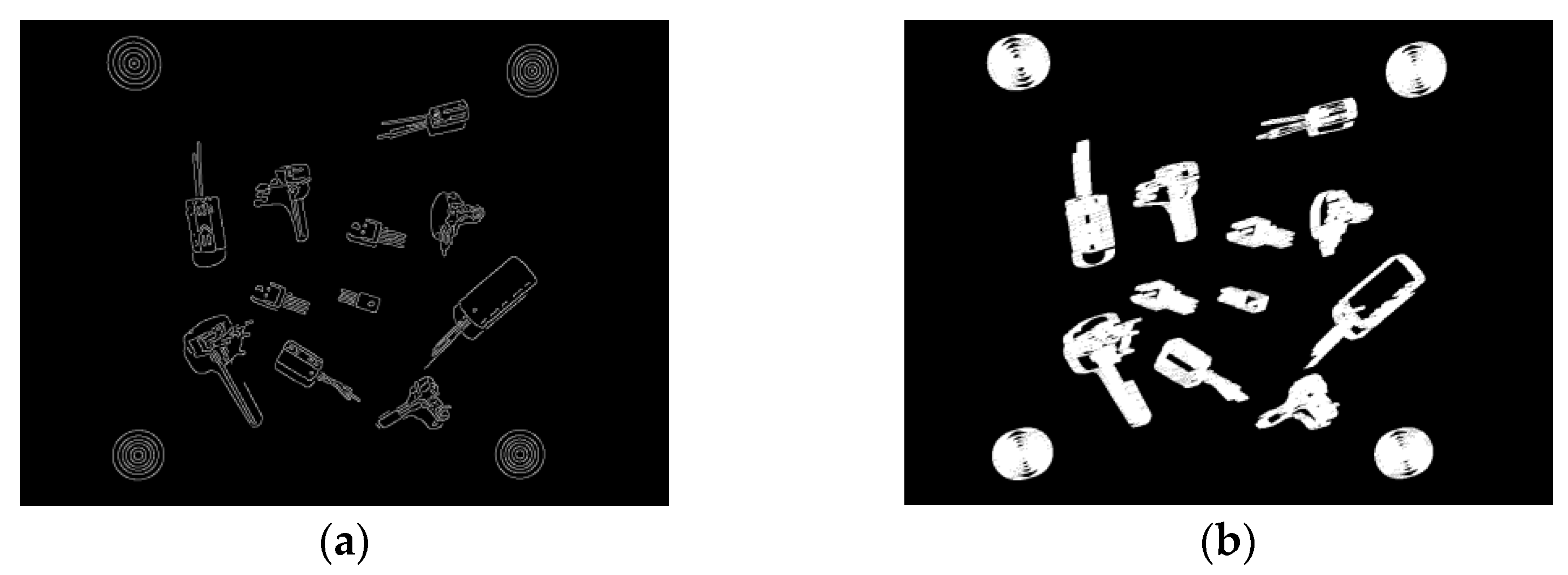
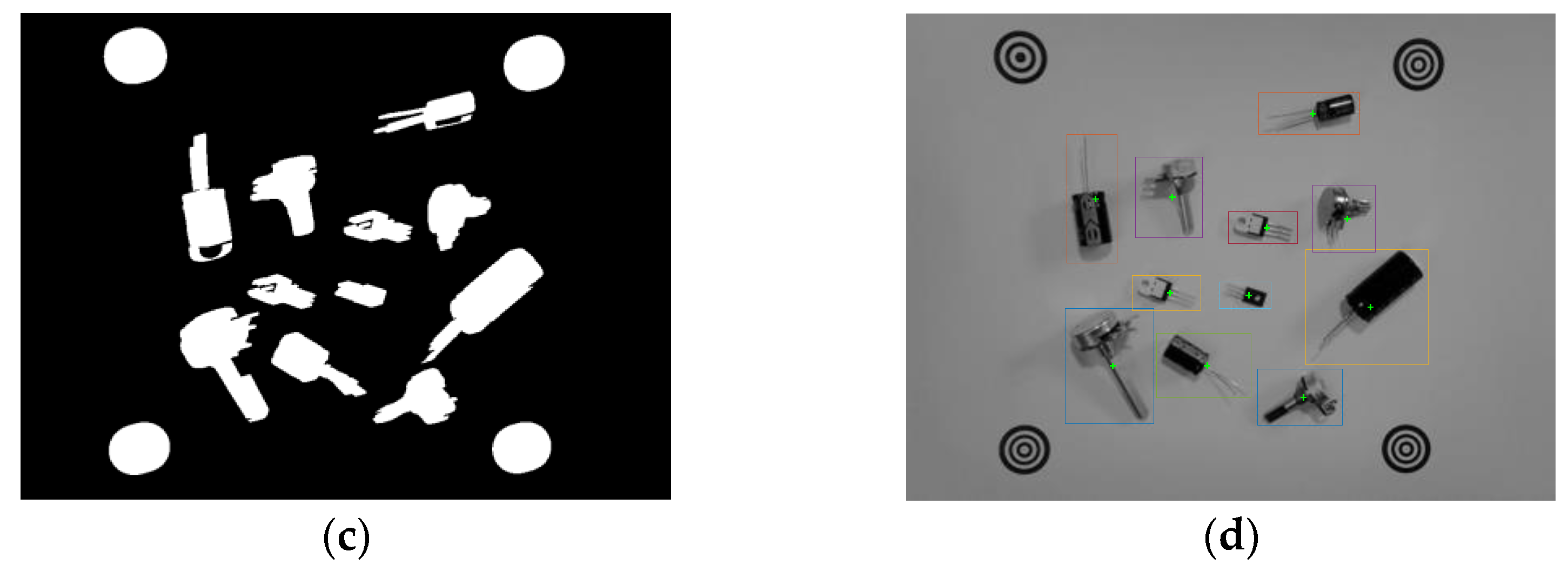





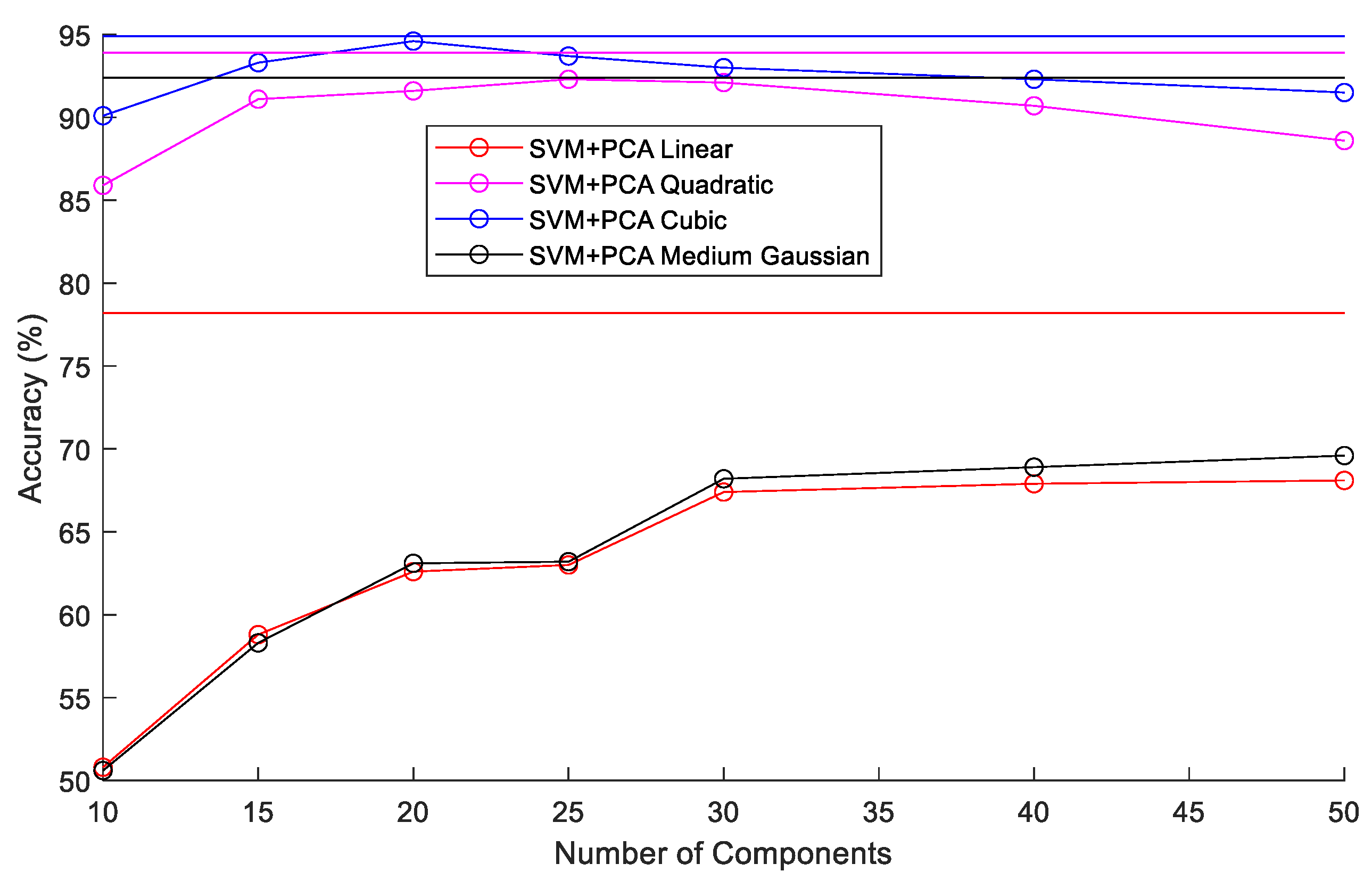
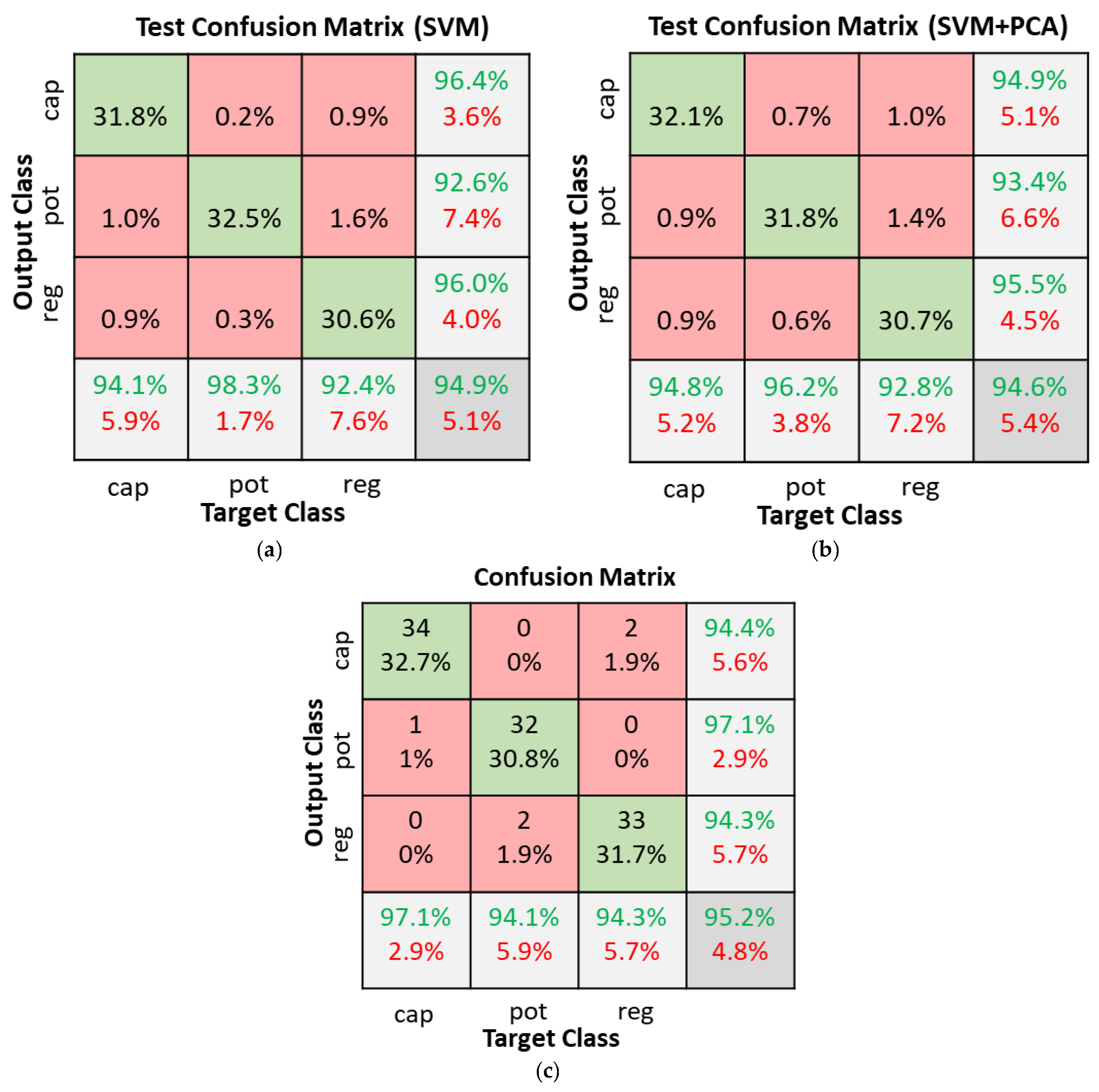

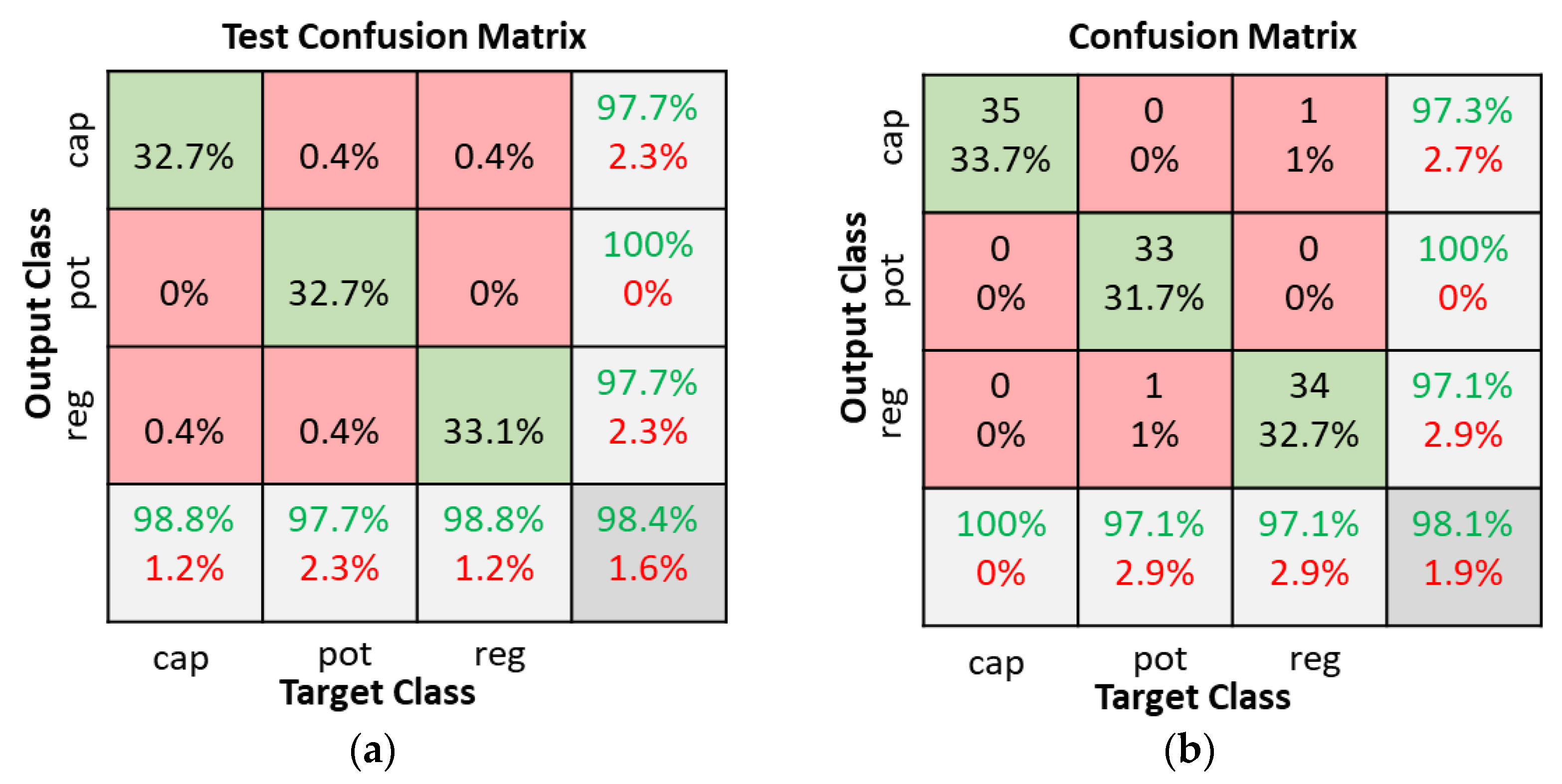


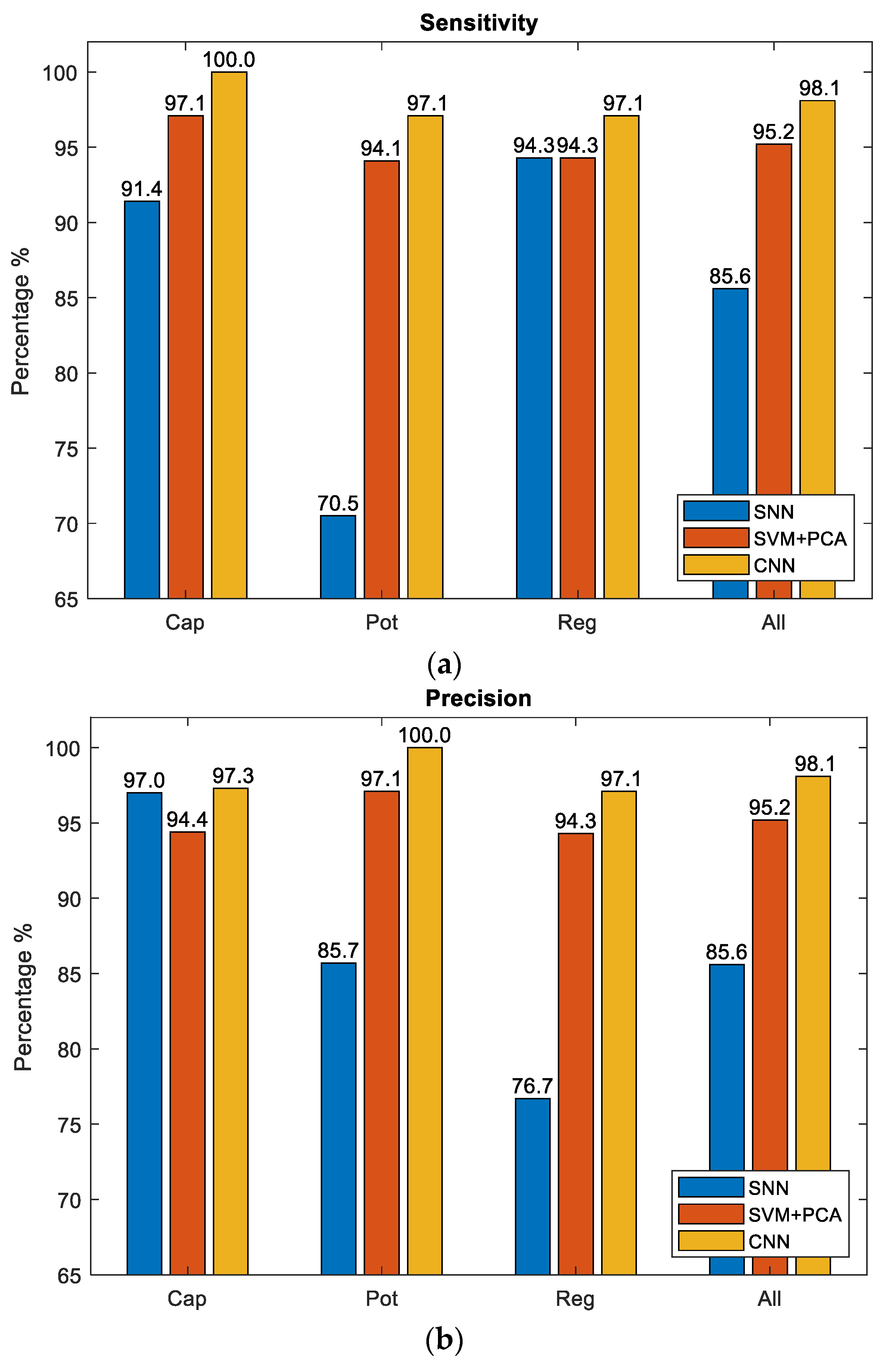
| Hidden Neurons | Test Accuracy % |
|---|---|
| 40 | 93.1 |
| 60 | 92.3 |
| 80 | 93.5 |
| 100 | 92.3 |
| 120 | 87.8 |
| Configuration Number | Value [Conv-1 Conv-2 Conv-3] |
|---|---|
| 1 | [10 20 40] |
| 2 | [12 24 48] |
| 3 | [15 30 60] |
| Parameters | Value |
|---|---|
| Optimize method | stochastic gradient descent with momentum (sgdm) |
| Initial learning rate | 0.02 |
| Maximum epochs | 7 |
| Validation frequency | 20 |
| Reference | Dataset Properties | Classes | Model Complexity | Accuracy |
|---|---|---|---|---|
| Atik (2022) [16] | Color, 227 × 227 × 3 pixels, 5332 images | 3 | Custom CNN with 13 layers | 98.99% |
| Xu et al. (2020) [15] | Color, 112 × 112 × 3 pixels, 40000 images | 22 | Faster SqueezeNet with 23 layers | 99.999% TPR when FPR = 10−6 |
| Huang et al. (2019) [18] | Color, 416 × 416 × 3 pixels, 43,160 images | 4 | YOLO-V3-Mobilenet with 30 layers | 95.21% mAP |
| Guo et al. (2021) [17] | Color, 608 × 608 × 3 pixels, 12,000 images | 20 | YOLOv4-tiny + MAM with 24 layers | 98.6% mAP |
| Proposed CNN classifier | Grayscale, 30 × 30 pixels, 1734 images | 3 | Custom CNN with 7 layers | 98.4% test, 98.1% real world test |
Publisher’s Note: MDPI stays neutral with regard to jurisdictional claims in published maps and institutional affiliations. |
© 2022 by the authors. Licensee MDPI, Basel, Switzerland. This article is an open access article distributed under the terms and conditions of the Creative Commons Attribution (CC BY) license (https://creativecommons.org/licenses/by/4.0/).
Share and Cite
Chand, P.; Lal, S. Vision-Based Detection and Classification of Used Electronic Parts. Sensors 2022, 22, 9079. https://doi.org/10.3390/s22239079
Chand P, Lal S. Vision-Based Detection and Classification of Used Electronic Parts. Sensors. 2022; 22(23):9079. https://doi.org/10.3390/s22239079
Chicago/Turabian StyleChand, Praneel, and Sunil Lal. 2022. "Vision-Based Detection and Classification of Used Electronic Parts" Sensors 22, no. 23: 9079. https://doi.org/10.3390/s22239079
APA StyleChand, P., & Lal, S. (2022). Vision-Based Detection and Classification of Used Electronic Parts. Sensors, 22(23), 9079. https://doi.org/10.3390/s22239079







